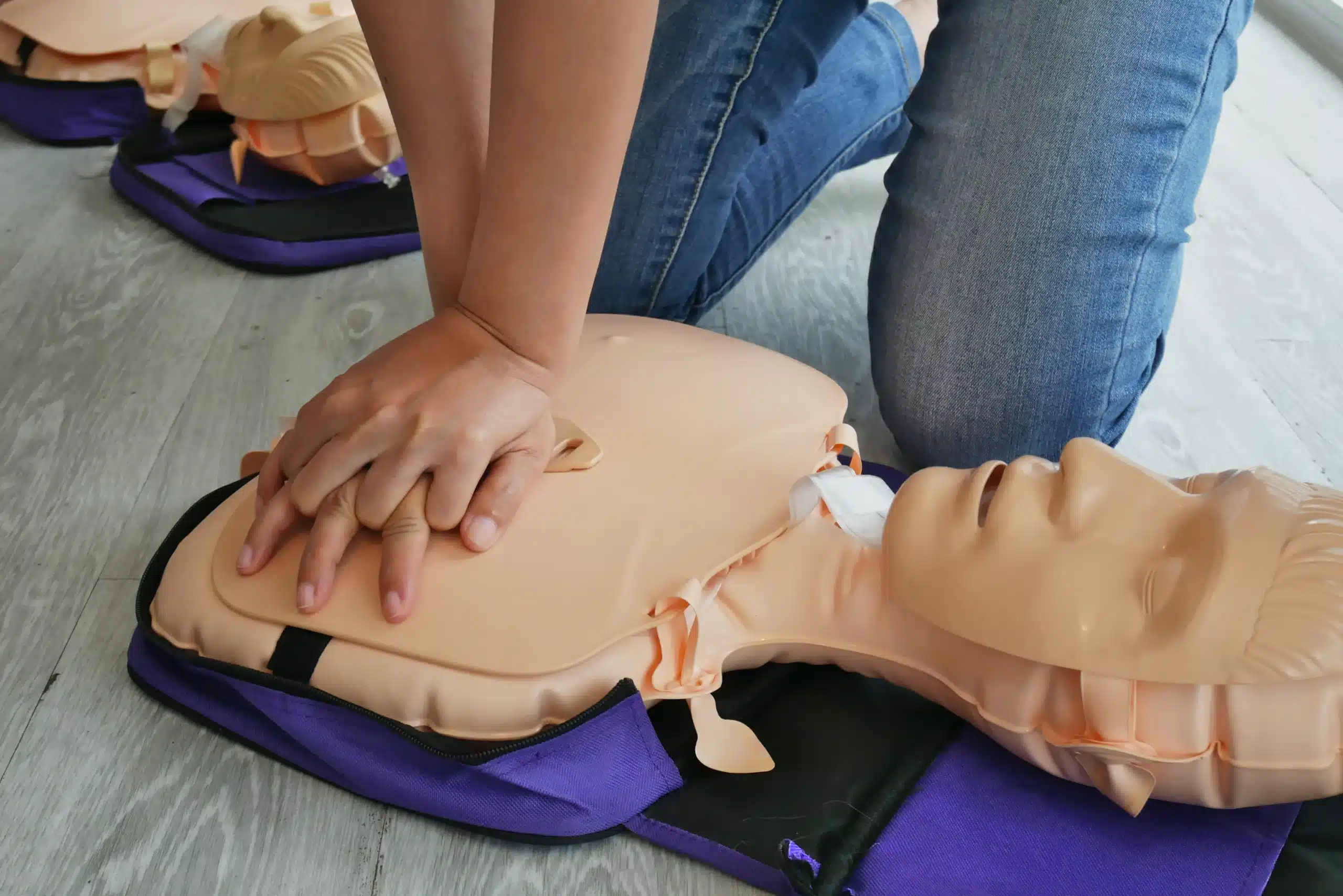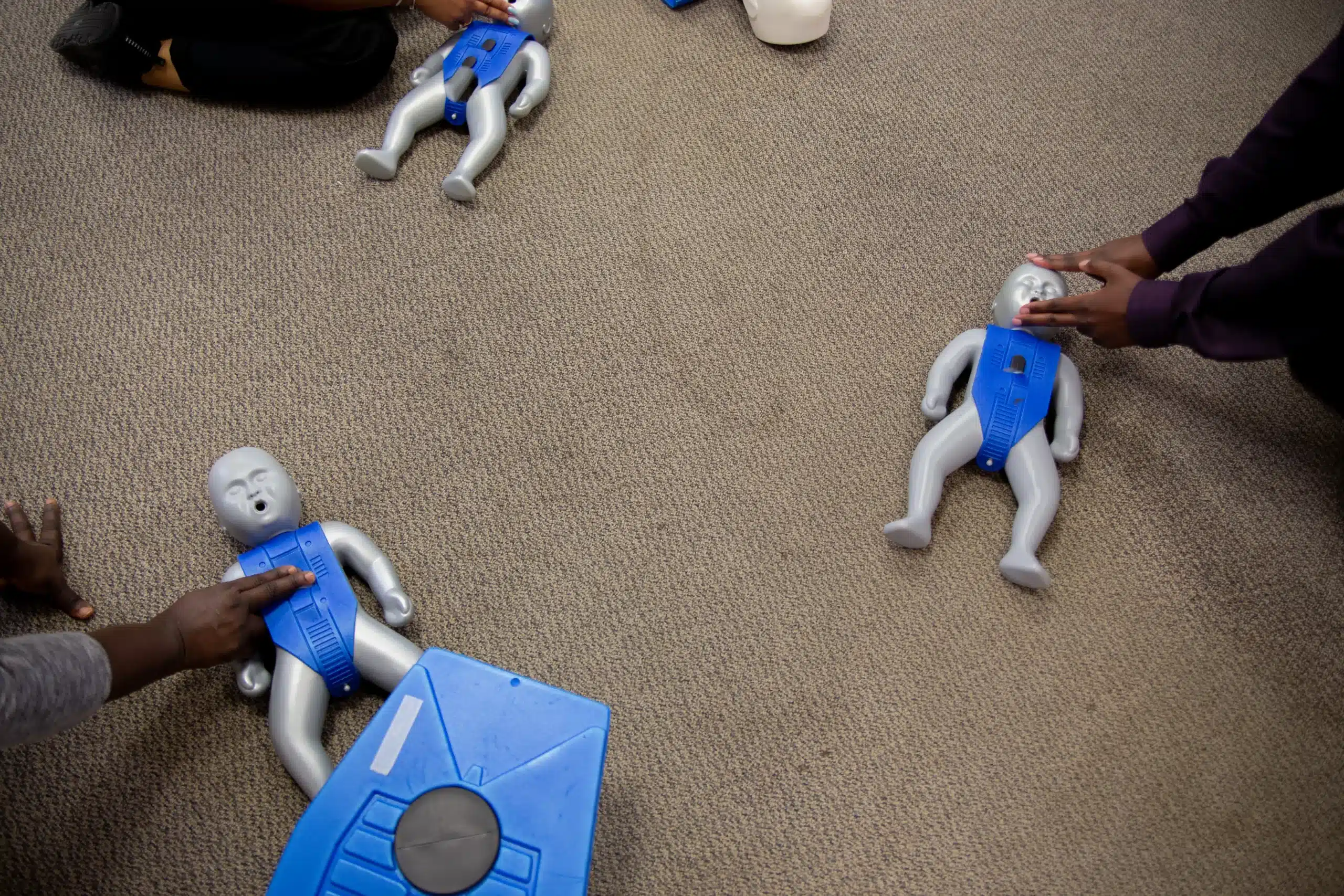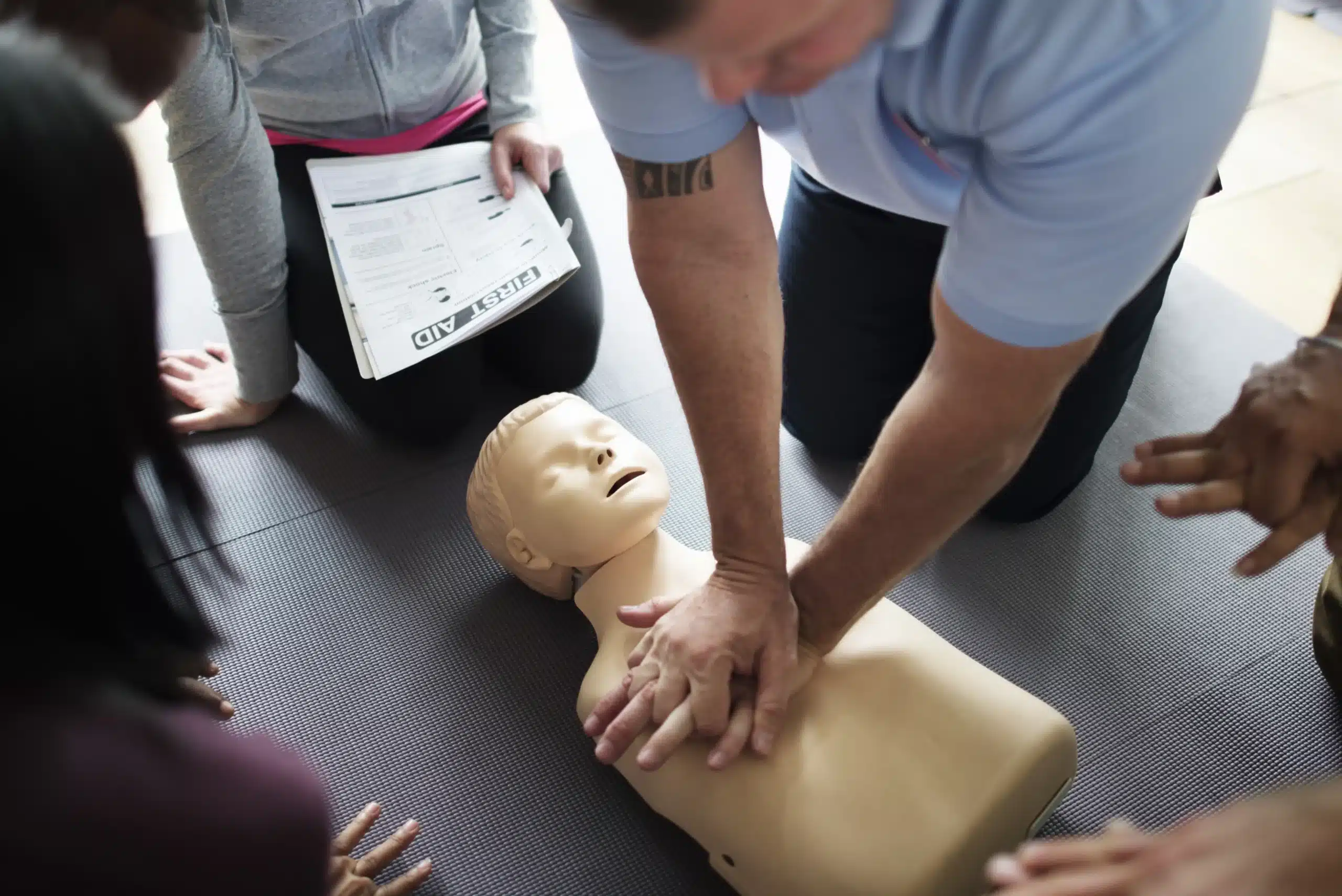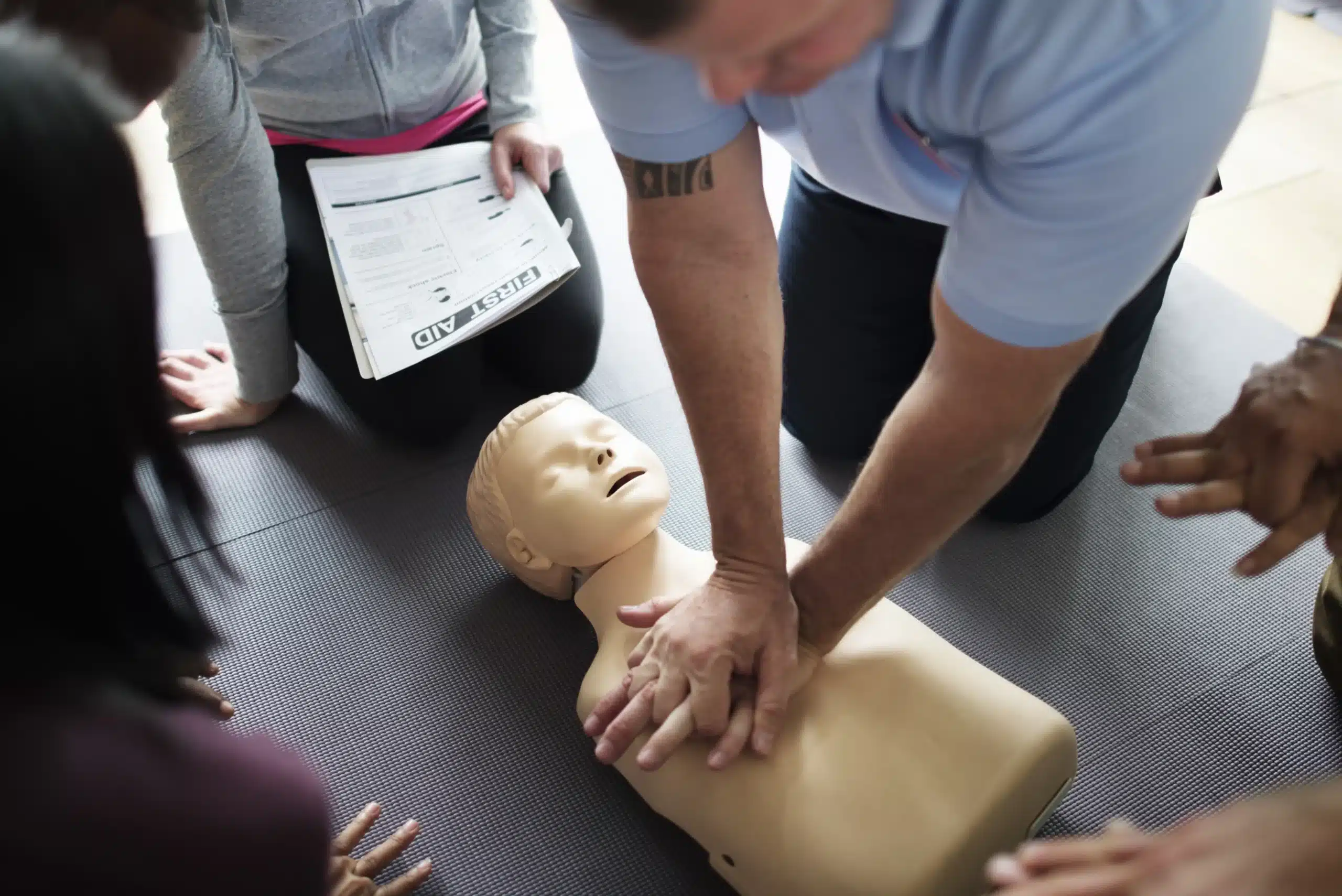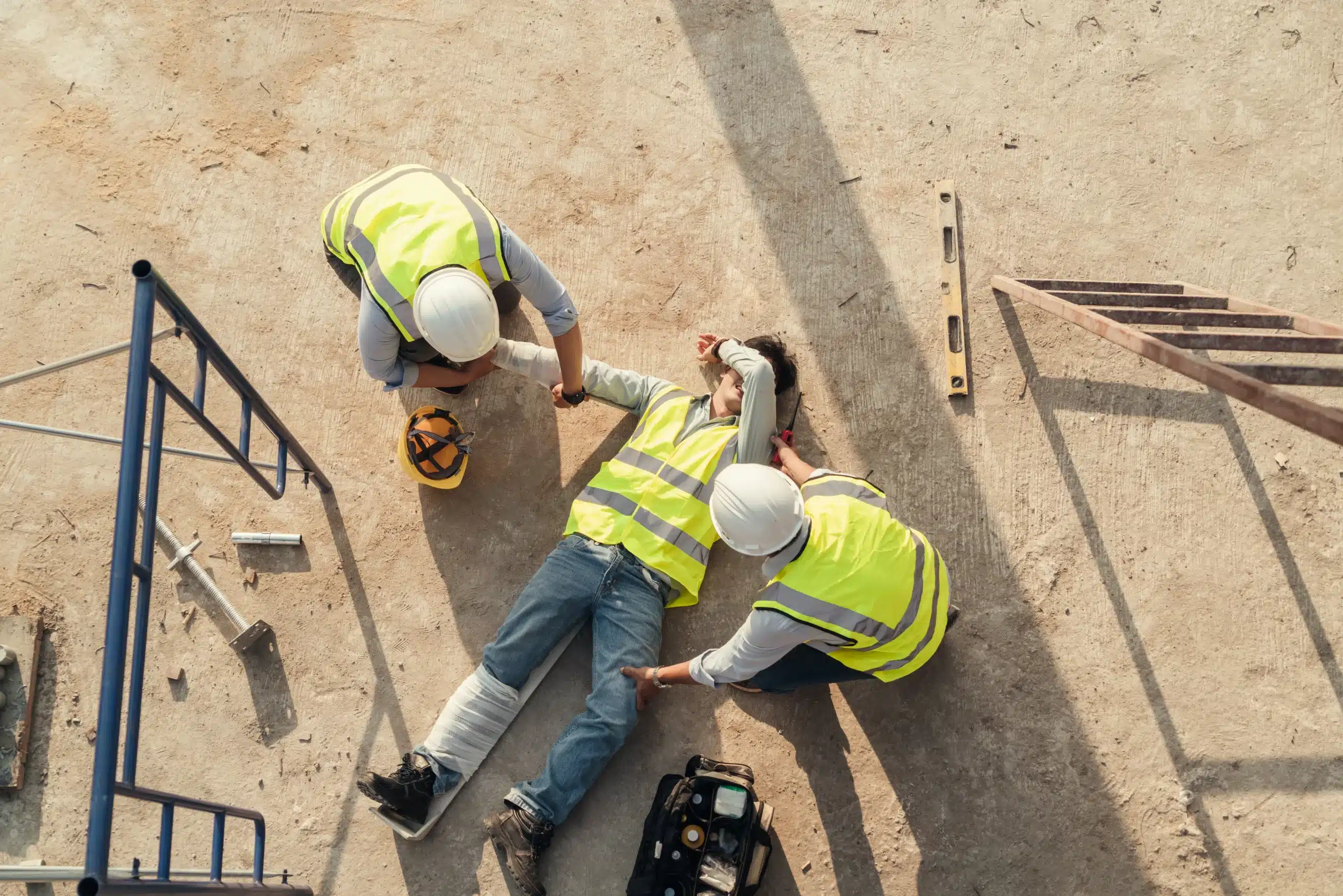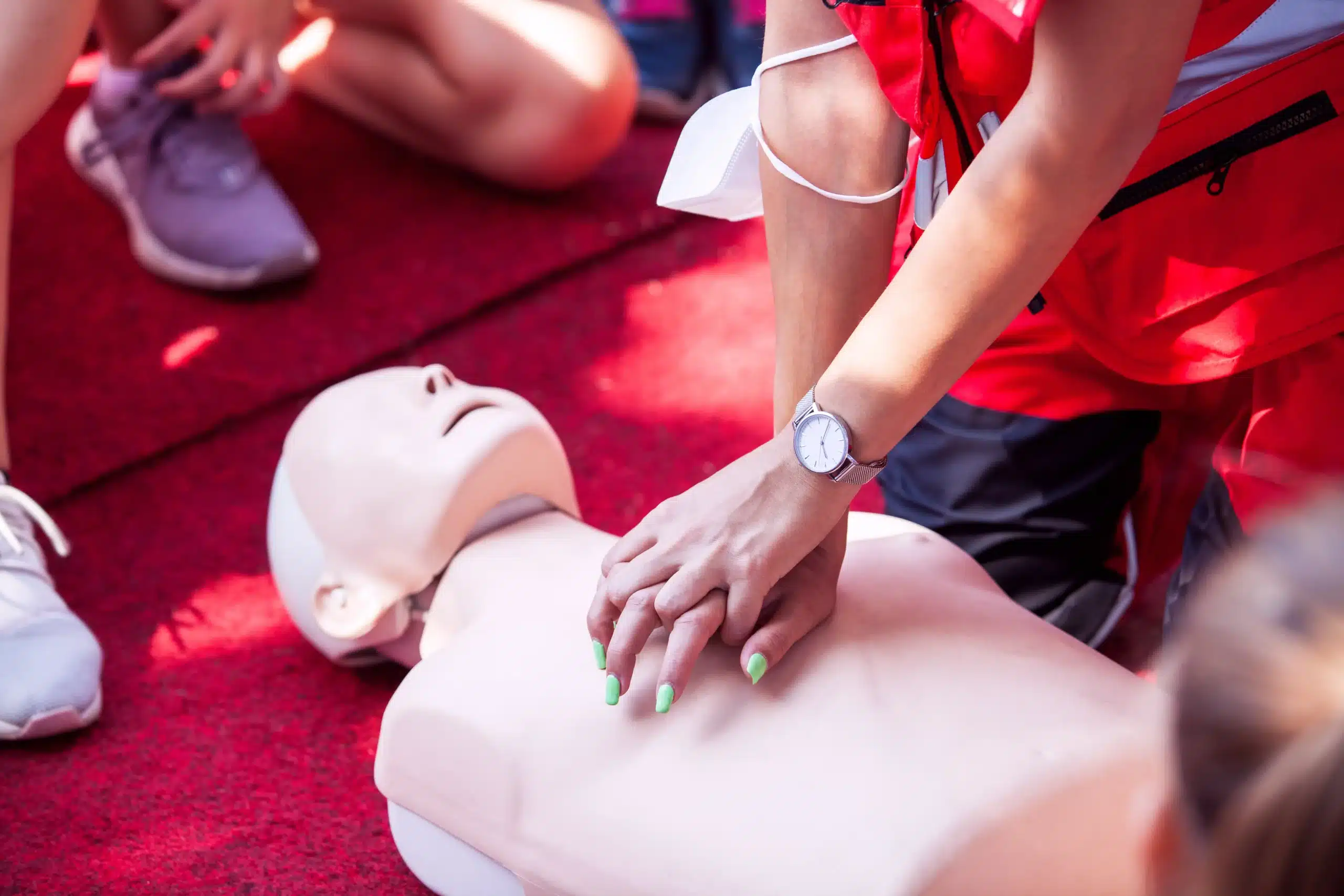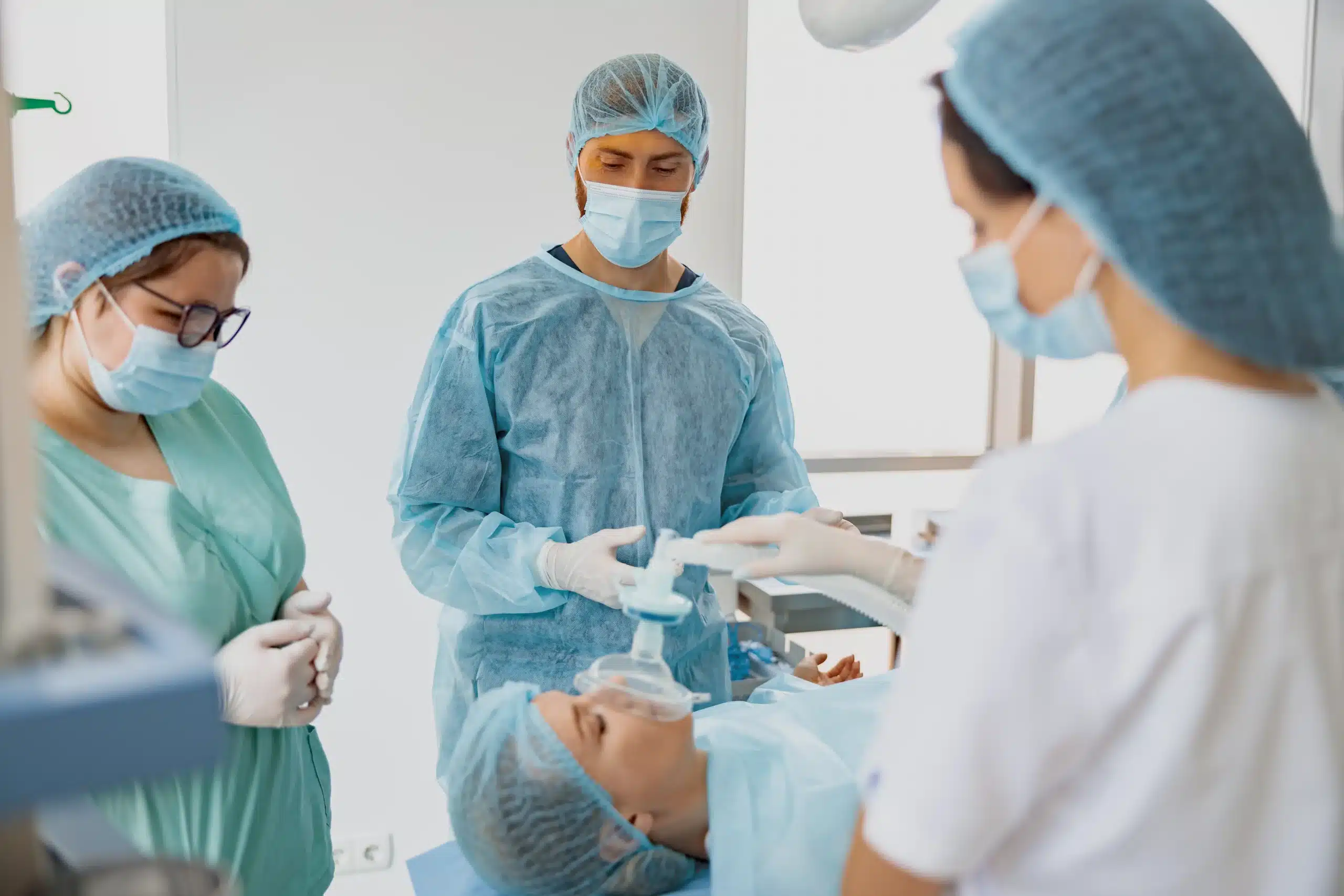From minor cuts to more serious injuries, knowing what to do in a medical emergency can be truly life-changing. If you’ve been thinking about taking a first-aid course, or if your search for “first-aid classes near me” brought you here, this guide is for you. We’ll cover the different types of first-aid training available, from basic CPR to more advanced certifications. We’ll also explore how to find classes in Redwood City, Palo Alto, and Menlo Park, how much they cost, and what to expect during training. Let’s get you prepared and confident to handle any medical situation that comes your way.
Key Takeaways
- First-aid skills empower you in emergencies: Whether it’s a minor cut or a life-threatening situation, having first-aid training gives you the confidence to respond effectively until professional help arrives. Find a course that fits your needs and get certified.
- Find the right first-aid class for you: Consider factors like course content, schedule, cost, and instructor qualifications when choosing a class. Look for courses aligned with recognized organizations like the American Heart Association or the American Red Cross.
- Maintain your skills for long-term preparedness: First-aid knowledge needs regular refreshing. Recertify every two years and practice your skills to stay sharp and ready to respond confidently in any situation.
What Are First-Aid Classes?
First-aid classes equip you with the skills to handle medical emergencies until professional help arrives. These courses cover various topics, from treating minor injuries like cuts and burns to responding to life-threatening situations. Different levels of first-aid training cater to various needs and professions. Let’s explore some common types:
CPR and AED Training
CPR (Cardiopulmonary Resuscitation) and AED (Automated External Defibrillator) training teaches you how to respond to cardiac and breathing emergencies. You’ll learn to perform chest compressions, rescue breaths, and use an AED to restore a normal heart rhythm. CPR/AED certification is crucial for healthcare providers, but it’s a valuable skill for anyone. Redwood City CPR Classes offers CPR/AED training aligned with American Heart Association guidelines. The American Red Cross also provides a CPR/AED program for professional rescuers.
Basic Life Support (BLS)
Basic Life Support (BLS) builds upon CPR and AED skills, often adding techniques for relieving choking and using airway adjuncts. BLS certification is typically required for healthcare professionals and those in emergency response roles. Redwood City CPR Classes offers BLS training that follows the latest American Heart Association guidelines.
Advanced Cardiac Life Support (ACLS)
Advanced Cardiac Life Support (ACLS) courses are designed for healthcare professionals who manage cardiac arrest and other cardiovascular emergencies. These courses cover advanced airway management, pharmacology, and team dynamics during resuscitation. ACLS certification demonstrates a higher level of proficiency in cardiac care.
Pediatric Advanced Life Support (PALS)
Pediatric Advanced Life Support (PALS) focuses on the emergency care of infants and children. Healthcare providers working with pediatric populations benefit from this specialized training, covering pediatric-specific resuscitation techniques and medication dosages. PALS courses are available through organizations like Safety Training Seminars. They are specifically designed for healthcare professionals who work with children.
Specialized First-Aid Training
Beyond general first aid, specialized courses cater to specific needs and environments. For example, childcare providers can take courses designed for children’s health and safety needs. These courses cover topics like recognizing and responding to common childhood illnesses and injuries. They often meet specific licensing requirements for childcare professionals. Code One CPR Training offers an example of this type of specialized course.
Find First-Aid Classes Near You
Finding the right first-aid class is easier than you think. Whether you prefer browsing online or connecting with local resources, several avenues can help you find a course that fits your needs and schedule.
Online Search Tools
The internet offers a wealth of resources for locating first-aid classes. The American Red Cross website, for example, features a convenient search tool to help you find first-aid courses near you. Simply enter your zip code to view available classes, schedules, and pricing. Many other organizations, including the American Heart Association and local training centers, also offer online class listings. Be sure to check each website for details on course content, cost, and certification.
Local Community Resources
Your community likely offers several options for first-aid training. Check with your local fire department, community centers, or recreation departments. These organizations often host first-aid courses or can direct you to providers in your area. Some community health clinics may also offer free or low-cost first-aid training. Consider joining a Community Emergency Response Team (CERT) program. Participating in CERT often includes free CPR and first-aid training, a valuable addition to your skillset. Contact your local or county Emergency Management Office for information on CERT programs near you.
Healthcare Facilities
Hospitals and medical centers frequently offer first-aid and CPR classes for both healthcare professionals and the public. Check with hospitals in your area for their course offerings. Specialized training centers, like Safety Training Seminars or Bay Area CPR, often provide a wider range of courses, including BLS, ACLS, PALS, and more. These facilities can be a great resource for comprehensive first-aid training.
Choose the Right First-Aid Class
Finding the right first-aid class involves understanding your needs, schedule, and the course content. Take these factors into account to make an informed decision.
Assess Your Needs
Before you start searching for a class, think about why you need first-aid training. Are you required to get certified for your job, or are you simply looking to prepare yourself for emergencies? In Redwood City, first-aid and CPR classes cater to various needs, from basic community courses to advanced certifications. Understanding your specific requirements will help you narrow down your options. For example, healthcare providers often require certifications like ACLS (Advanced Cardiac Life Support) or PALS (Pediatric Advanced Life Support), while others may only need basic first aid and CPR.
Consider Your Schedule
Life gets busy, so finding a class that fits your schedule is essential. Many providers in Redwood City offer flexible scheduling, with courses available throughout the week and even on weekends. Consider whether you prefer a weekday evening class, a weekend intensive course, or a blended learning option that combines online modules with in-person skills sessions.
Evaluate Course Content and Instructors
Not all first-aid classes are created equal. Look for courses that align with recognized guidelines, such as those offered by the American Heart Association. A quality course should cover essential topics like CPR, AED usage, and how to respond to common injuries. Instructors should be certified and experienced, providing clear instruction and hands-on practice. Don’t hesitate to ask about an instructor’s credentials and teaching style. Reading reviews and testimonials can also give you insights into the quality of instruction. Safety Training Seminars and other reputable providers often highlight their instructors’ qualifications.
How Much Do First-Aid Classes Cost?
Knowing the cost of first-aid training helps you budget and find the best value. This section breaks down typical course pricing, available discounts, and factors influencing overall costs.
Average Price Ranges
First-aid class costs vary depending on several factors. Generally, you can expect to pay somewhere between $50 and $150. A shorter course covering CPR and AED use might average around $35 per person. More specialized training, like wilderness first aid, will likely be more expensive. CPR classes themselves can range from free to over $100, depending on the training’s depth and whether materials are included. Checking directly with the training provider for up-to-date pricing is always recommended. Redwood City CPR Classes offers a low price guarantee.
Factors Affecting Cost
Several factors influence first-aid class pricing. The course type and format (online, in-person, or blended learning) play a significant role. Location also matters; courses in metropolitan areas might have higher prices. The course length and the certification level also affect the cost. For example, a basic first-aid course will typically cost less than a more advanced course like ACLS. The organization providing the training sets its own pricing, so comparing options is worthwhile. Finally, included materials, such as textbooks or CPR pocket masks, can add to the overall cost.
Discounts and Group Rates
If you’re looking to save on first-aid training, explore potential discounts. Many providers offer group discounts, making training more affordable for workplaces or community groups. Some organizations also offer discounts for students, seniors, or other demographics. Asking about available discounts or group rates is always a smart move. Redwood City CPR Classes offers discounts for group classes.
Get Certified in First Aid
Getting your first-aid certification is a straightforward process. Here’s what you can expect, how long your certification is valid, and how to stay up-to-date.
What to Expect During Certification
First-aid certification courses are designed to be interactive and accessible. Led by experienced instructors, these courses offer a comfortable learning environment where you’ll learn essential skills for handling various situations, from minor cuts and burns to more serious injuries. Expect a mix of demonstrations, hands-on practice, and discussions. Redwood City CPR Classes offers a supportive and engaging learning experience perfect for acquiring these vital skills.
How Long is Certification Valid?
After successfully completing your first-aid training, your certification will typically be valid for two years. This timeframe gives you plenty of time to use your skills and encourages regular updates to stay current with the latest guidelines. Check with your certifying organization for specific renewal requirements.
Recertification Requirements
To maintain your first-aid credentials and keep your skills sharp, you’ll need to recertify periodically. Recertification courses cover updates to first-aid procedures and allow you to refresh your knowledge and practice your techniques. This ongoing training helps ensure you’re always prepared to provide effective assistance during emergencies. Redwood City CPR Classes offers convenient re
First-Aid Class Providers in Redwood City and Nearby
Finding the right first-aid class can feel overwhelming, but Redwood City and the surrounding areas offer several excellent options. Whether you’re a healthcare professional seeking recertification or a community member wanting to learn essential lifesaving skills, there’s a course out there for you. Here’s a rundown of providers to help you get started:
Redwood City CPR Classes
Redwood City CPR Classes offers a comprehensive selection of courses. They cover everything from basic CPR and first aid to advanced certifications like ACLS and PALS, catering to both healthcare providers and the general public. Their convenient Redwood City location serves surrounding communities like Palo Alto and Menlo Park. They also offer group discounts, a great option for businesses or community organizations.
Safety Training Seminars
Safety Training Seminars provides a wide array of American Heart Association (AHA) courses, including CPR, BLS, ACLS, PALS, and First Aid. With training offered in over 60 cities across Northern California, they offer accessible options for Redwood City residents. This broad reach makes it easier to find a class that fits your schedule and location.
Bay Area CPR
Bay Area CPR offers AHA-certified BLS, ACLS, PALS, and CPR classes in Redwood City. They emphasize the importance of CPR and first-aid training for everyone, regardless of profession. This focus on community preparedness makes them a valuable resource for individuals and families.
Palo Alto CPR Classes
Palo Alto CPR Classes offers various courses, including BLS, ACLS, PALS, and First Aid. This range of options allows you to find the right course to match your specific needs and skill level. They serve the broader Redwood City area, providing convenient access to high-quality training. For parents and caregivers, they offer detailed information on their pediatric CPR and first-aid classes.
American Heart Association
The American Heart Association (AHA) sets the standards for CPR and first-aid training. Many training centers, like Safety Training Seminars and Redwood City CPR Classes, are AHA-certified and offer courses that adhere to these guidelines. You can often find a list of AHA-certified training centers on the AHA website. Redwood City CPR Classes provides information on their website about their AHA-certified courses.
American Red Cross
The American Red Cross is another well-respected provider of CPR and first-aid training. They offer a variety of classes designed for different audiences, from healthcare providers to the general public. You can explore their CPR and first-aid class options on their website.
Local Hospitals and Medical Centers
Many local hospitals and medical centers in the Redwood City area offer first-aid training and CPR classes. These classes are often tailored to the community’s needs and may offer specialized training. Check with hospitals in your area or consult this helpful guide for more information about local first-aid training resources.
Prepare for Your First-Aid Class
So, you’ve signed up for a first-aid class—congratulations! Knowing how to handle emergencies is a valuable skill. To make the most of your upcoming training, here’s how to prepare:
What to Bring
Most first-aid courses provide the necessary equipment, including mannequins and AED trainers. Bring a notebook and pen to take notes, especially if the course covers a lot of information quickly. A water bottle is also a good idea, especially for longer sessions. Check with your chosen provider, like Redwood City CPR Classes, to see if they have specific recommendations. They may also offer group discounts if you’re attending with friends or colleagues.
Pre-Course Study Materials
Some first-aid classes, particularly advanced courses like ACLS or PALS, may suggest pre-course reading or online modules. This isn’t always required for basic first-aid and CPR training, but familiarizing yourself with the basics can give you a head start. Providers often have resources available. Even brushing up on basic first aid online can be helpful.
Dress Code and Physical Requirements
First-aid training involves hands-on practice, including CPR and bandaging techniques. Wear comfortable clothing that allows for a full range of motion. You’ll be kneeling and bending, so avoid restrictive outfits. While most first-aid courses don’t have strenuous physical requirements, let your instructor know about any physical limitations that might affect your participation. Training is designed to be accessible, and instructors can often adapt exercises to accommodate various needs. Redwood City CPR classes offers a low price guarantee, making it an affordable option for many.
Maintain Your First-Aid Skills
Knowing first aid is like having a superpower—it can make a real difference in critical situations. But just like any skill, it needs regular practice to stay sharp. Let’s explore how you can keep your first-aid knowledge fresh and ready to use.
Regular Practice and Refresher Courses
Think of your first-aid certification as having an expiration date. While the skills you learn are invaluable, guidelines and best practices do evolve. The American Red Cross recommends refreshing your first-aid certification every two years. This ensures your knowledge is current and aligns with the latest recommendations. Convenient recertification courses are readily available, both online and in person, making them easy to fit into your schedule.
Even between recertification courses, regular practice is key. Consider taking a refresher course or joining a local study group to keep your skills honed. Hands-on practice builds muscle memory and confidence, so you can react effectively in a stressful situation.
Continuing Education Opportunities
First aid is a foundation, but there’s always more to learn. Expanding your skillset with additional training, like CPR and AED certification, can further empower you in emergencies. The American Red Cross offers a variety of courses that complement your first-aid knowledge, allowing you to handle a broader range of situations. Redwood City CPR Classes also provides CPR and first-aid training, offering valuable resources for ongoing education. Staying up-to-date on the latest techniques and guidelines is crucial for everyone’s safety and preparedness.
Why is First-Aid Training Important?
First-aid training empowers you to confidently handle emergencies. Knowing how to respond can make a real difference in various situations, from minor injuries at home to more serious incidents in public. First-aid certification gives you the skills to stabilize someone until professional help arrives, potentially improving outcomes and even saving lives.
Consider this: would you know what to do if someone at a family gathering started choking? Or if a colleague fainted at work? Pediatric first-aid training focuses on emergencies involving children, while general first-aid training prepares you for a broader range of situations. These skills are valuable for everyone, not just medical professionals. As experts note, first-aid training is important regardless of your career. It’s about being prepared and confident to act when needed.
Beyond the practical skills, first-aid training also promotes a sense of responsibility within a community. It encourages people to be more aware of their surroundings and look out for each other. Many workplaces also encourage first-aid certifications, making it a valuable asset professionally. Providing feedback on your training helps improve these courses for everyone. First-aid training is an investment in yourself, your community, and the well-being of those around you. It’s about being prepared, confident, and ready to make a difference.
Related Articles
- CPR Training in Menlo Park: A Complete Guide
- Find BLS Classes Near Me: A Practical Guide – Redwood City CPR Classes
- Advanced Cardiac Life Support (ACLS) in Menlo Park CA
- Pediatric Advanced Life Support (PALS) in Palo Alto – Redwood City CPR Classes
- First-Aid Training in Palo Alto: A Complete Guide – Redwood City CPR Classes
Frequently Asked Questions
What’s the difference between CPR, BLS, and ACLS? CPR focuses on chest compressions and rescue breaths for cardiac arrest. BLS builds upon CPR, adding techniques like choking relief and airway management. ACLS is advanced, designed for healthcare professionals managing complex cardiovascular emergencies. It involves advanced airway management, pharmacology, and team dynamics during resuscitation.
How do I find a first-aid class near me? Start by searching online! The American Red Cross and American Heart Association websites have class locators. Also, check local community centers, hospitals, and specialized training facilities like Safety Training Seminars. Don’t forget to ask your local fire department or recreation department, too.
How much do first-aid classes typically cost? Costs range from around $50 to $150, depending on the course type, location, and included materials. Basic CPR/AED courses might be less expensive, while advanced certifications like ACLS will be higher. Look for discounts – many providers offer group rates or student discounts.
How long is my first-aid certification good for, and how do I renew it? Most first-aid certifications are valid for two years. You’ll need to take a recertification course to renew your skills and stay updated on the latest guidelines. Check with your certifying organization for specific requirements.
What should I expect during a first-aid class, and how can I prepare? Expect a mix of instruction, demonstrations, and hands-on practice. Wear comfortable clothes suitable for kneeling and bending. Bring a notebook and pen for notes, and a water bottle. Some advanced courses may have pre-course reading, so check with your provider. Most importantly, come ready to learn and participate!
